On this page you will find information on the:
Black Gum Black Willow Camphor Chinese Tallow Cypress Hackberry Pine Southern Live Oak Swamp Maple
Black Gum
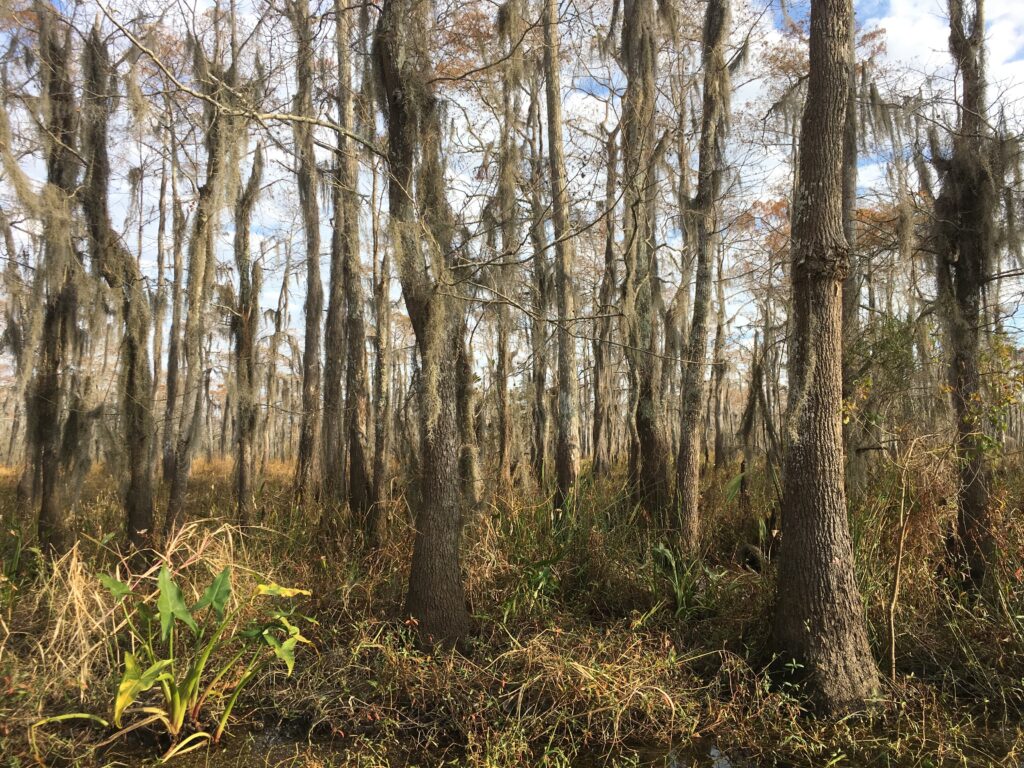
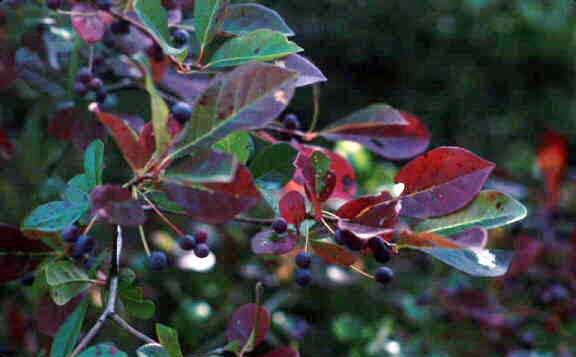
Common Name: Black Gum, Black Tupelo, Tupelo, Sour Gum
Scientific name: Nyssa sylvatica
Type: Tree
Habitat: swamp and nearby drained areas
On both sides of Greenway
Native
Perennial
Black or Tupelo Gum is a moisture-loving tree, it grows in the inundated swamps on either side of the Greenway and can grow in nearby dry ground. It has grey, wrinkly bark like an elephant’s hide and leaves that turn a vivid yellow with irregular red splotches the color of blood in fall, making the tree look like it was witness to a massacre.
Black Willow
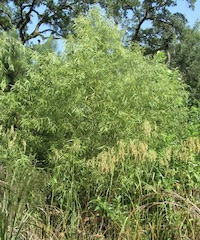
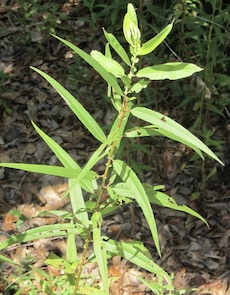
Common Name(s): Black Willow
Scientific name: Salix nigra
Type: Tree
Habitat: Drained and wet soils
Predominantly on the East side of Greenway
Native
Perennial
The moisture-loving Black Willow tree is common along many stream banks and semi-drained wetlands in the South. A trip on the Mississippi River and almost any major Gulf Coast stream is like traveling between two continuous walls of Black Willow. One of the reasons for this is because the tree thrives on chaos. It prefers the disrupted soils and rough conditions found in these dynamic environments. Perhaps this is one of the reasons why you almost never see an ideal, symmetrical Black Willow tree. The tree also prefers the disrupted, wet soils associated with the dredge spoil bank along the I-55 borrow canal and old Hammond Highway roadbed next to the Greenway.
Another reason why the tree is so prolific is that its seeds are the fluffy kind that can ride the wind. A good gust will distribute a small cloud of them in a straight line downwind where, if the ground is right, they will sprout a short time later.
Camphor
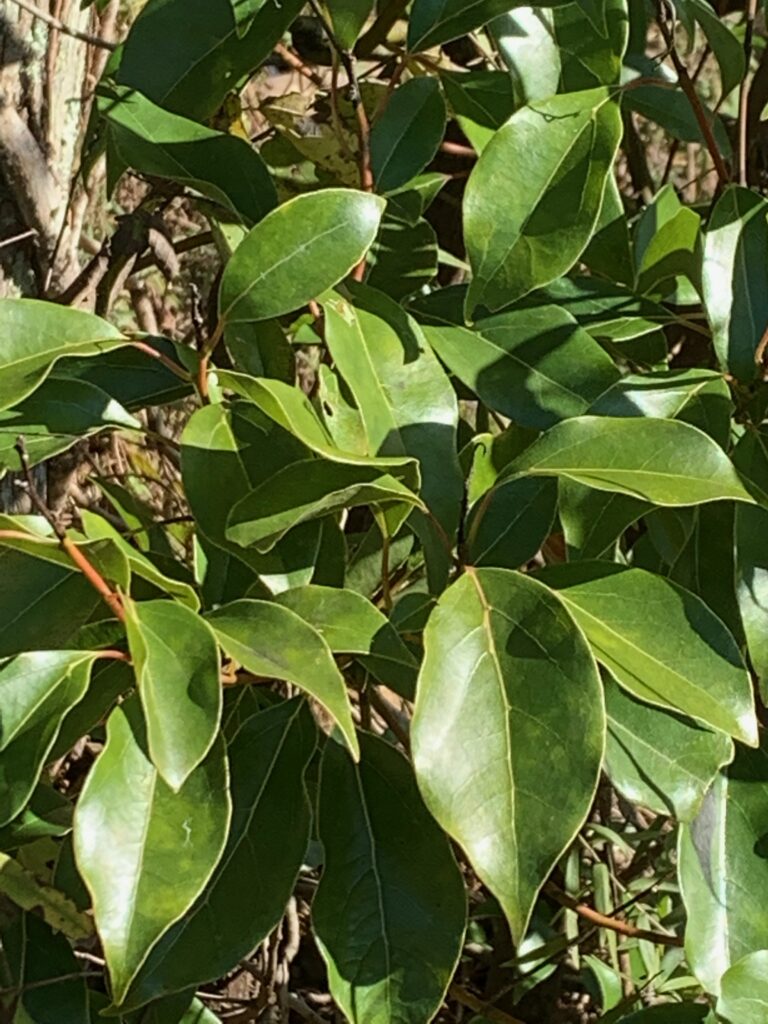
Common Name: Camphor Tree
Scientific name: Cinnamomum camphora
Type: Tree/Shrub
Habitat: drained, disturbed soils
Mainly on the east side of the Greenway
Non-native – China, Taiwan, Korea
Perennial
There are not too many Camphor trees on the Greenway but these East Asian invaders are easily identifiable by reddish stems and glossy green leaves you can crush in your hand to release their medicinal, aromatic and familiar camphor oil (think Vick’s Vaporub, Campo-Phenique, etc.).
Cedar
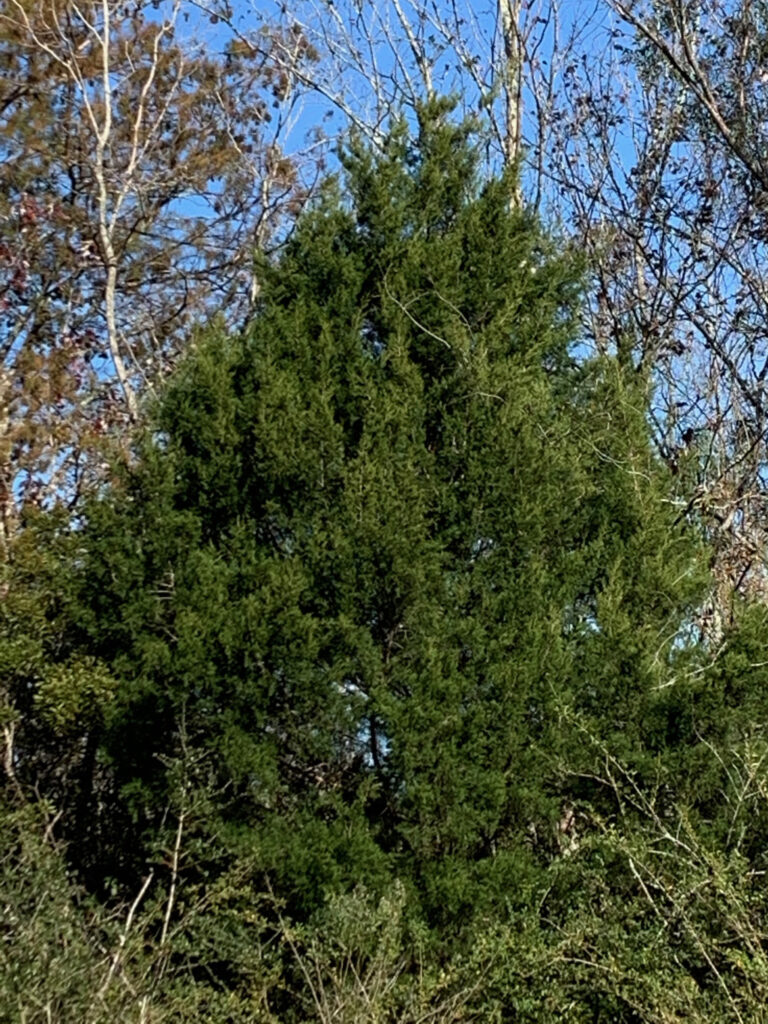
Common Name(s): Southern Red Cedar, Sand Cedar, Coast Juniper, Virginian Juniper, Red Juniper, Pencil Cedar, and Aromatic Cedar
Scientific name: Juniperus virginiana var. silicicola
Type: Shrub/Tree
Habitat: drained soils
On both sides of the Greenway
Native
Perennial
The Southern Red Cedar is not a true cedar but a juniper, a special coastal variety that prefers sandy soils and coastal air. The tree has a fragrant, pinkish/red-brown wood that is rot resistant and, as an added bonus, it repels insects. Cedar-lined chest and closets made of this wood are known to protect clothing from moths year ‘round. Don’t get your hopes up though, the seeds of a different variety of Juniper (communis) are the kind used for making gin.
Chinese Tallow
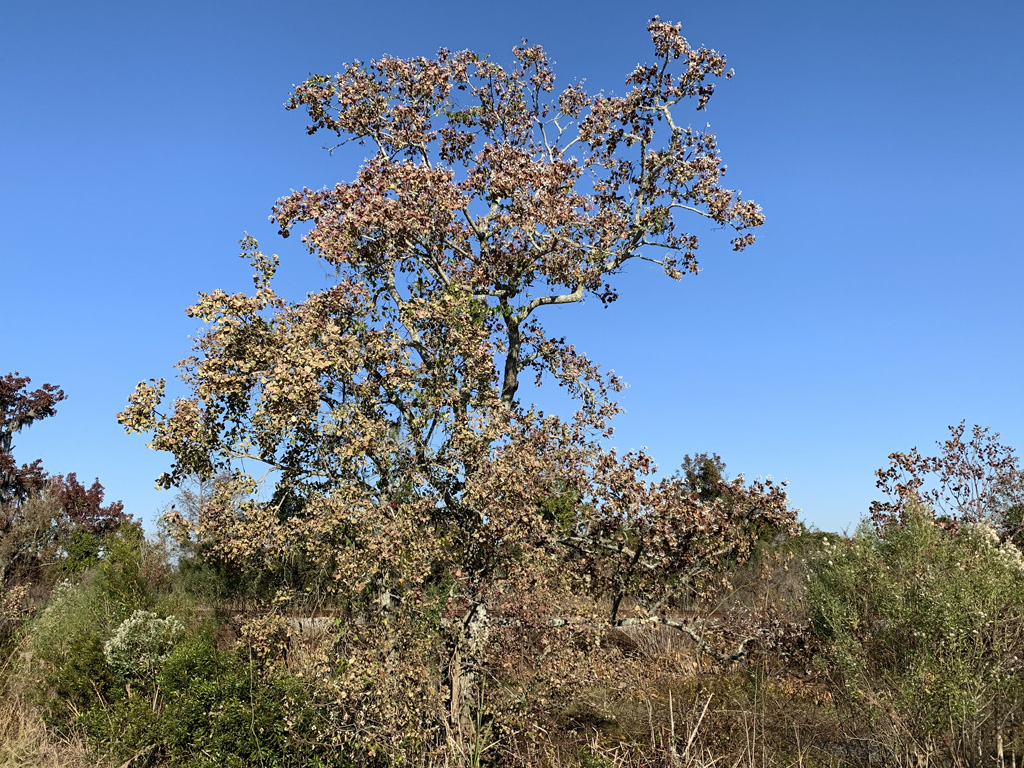
Common Name(s): Chinese Tallow, Popcorn Tree, Chicken Tree
Scientific name: Triadica sebifera
Type: Tree
Habitat: Just about anywhere, from only partially to fully drained soils
Predominantly on: Both sides of the Greenway
Non-native: Highly invasive
Perennial
The highly invasive Chinese Tallow Tree was once valued for the white waxy coating on its billions of seeds that were used for the vital US candle-making industry. Since the plant loves the lush growing conditions in the South (its just like home) and Edison invented his bulb, the tree has had nothing else better to do than to take over and become the bane of the region’s land managers.
The tree aggressively takes advantage of cleared or disturbed ground and any openings it can find in the forest canopy. Its seeds are spread rapidly by floodwaters and bird poop (both of which we have plenty of in Louisiana). Once established, they grow quickly and hog all the sunlight, moisture and nutrients to keep the natives at bay.
It grows quickly in all sorts of soils and is difficult to kill. You almost have to grudgingly admire this tree’s resourcefulness, versatility and tenacity. If you cut off its head, its roots will just sprout a few new suckers and you’ll end up with a cluster of trees in place of the original. Grievously wounded, smashed-up and fallen trees will sprout out and find a way to carry on. Standard counter-attacks by herbicides and time consuming physical removal have never successfully eradicated it because birds will happily fly in and do their thing all over the place and spread its seeds.
The I-55 Canal spoil bank north of Pass Manchac is heavily infested with them because of the bad timing of a fire that wiped out the good growth that initially covered this ground and gave the rapidly spreading Tallow a chance to overrun the area.
Cypress
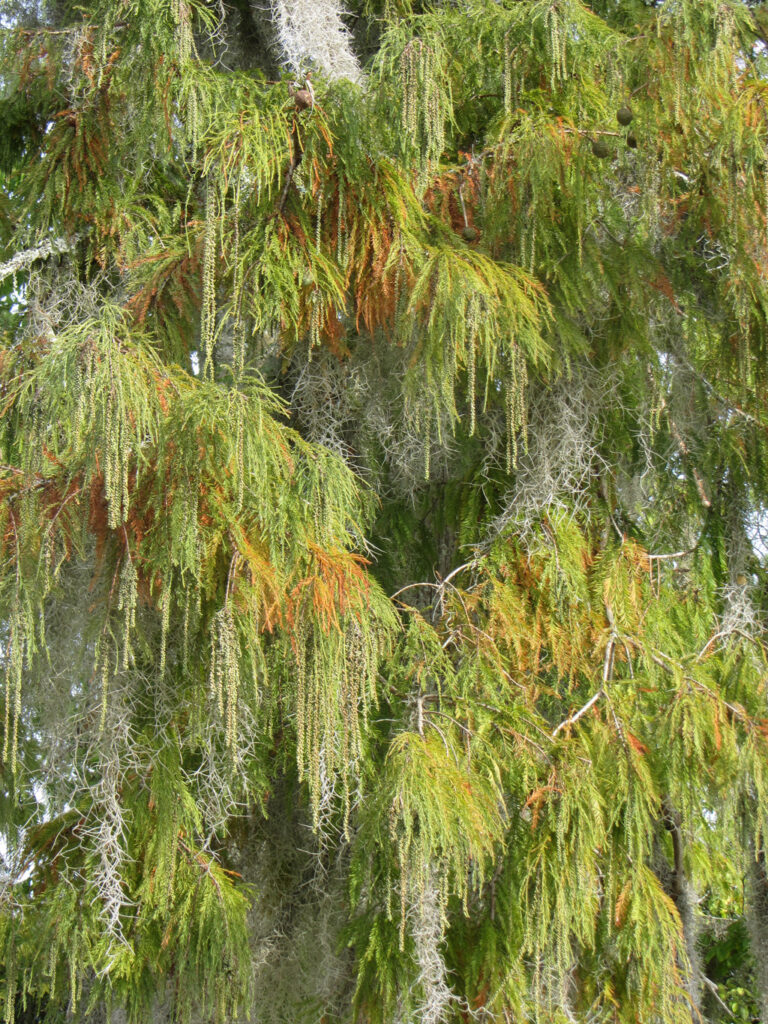
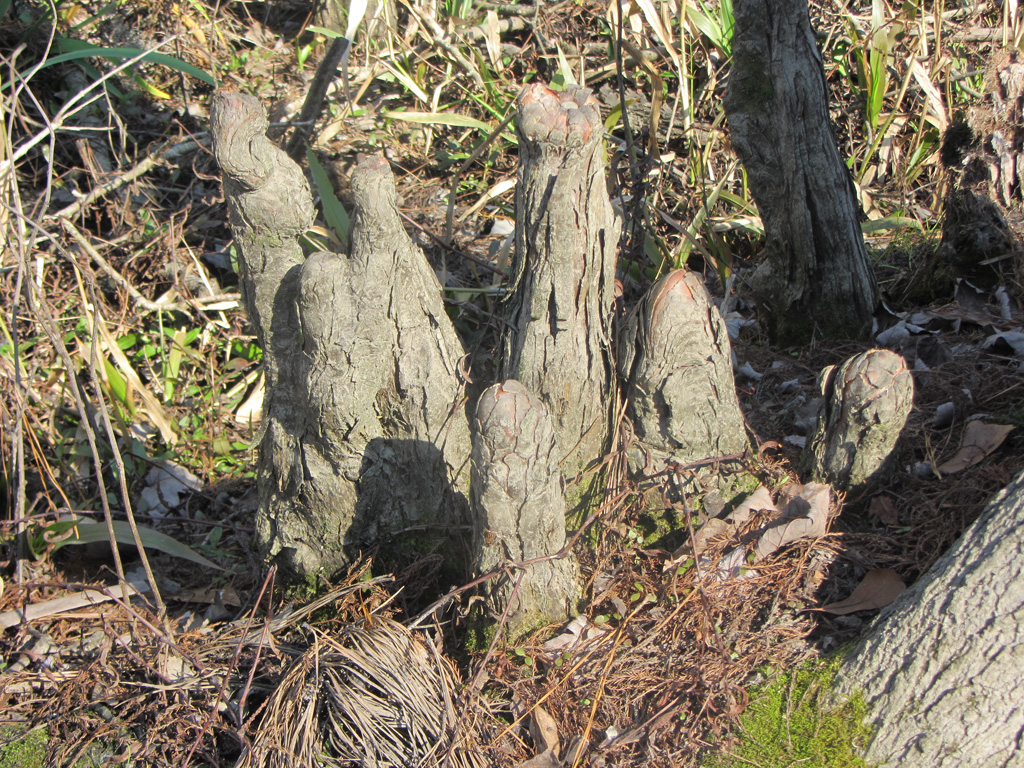
Common Name(s): Bald Cypress
Scientific name: Taxodium distichum
Type: Tree
Habitat: wet soils, swamp
Predominantly on both sides of Greenway
Native
Perennial
Cypress, along with Tupelo Gum, are the dominant trees in our Louisiana swamps, accompanied by a special ecology of animals and other plants. This forest type once covered vast areas of the southeastern US and were extensively harvested in the late 1880-1920s. Since that time conversion of the land to agriculture and changing environmental and ecological conditions have allowed only a fraction of this type forest to remain.
Cypress wood, especially from older trees, is magnificent – beautiful, rot resistant, easy to work and still considered so valuable for furniture and architectural details that people can actually make good money finding remnants of the original old growth forest by dredging up lost, sunken cypress logs from river and lake bottoms or salvaging cypress timbers from old warehouses and factories.
The tree gets their odd name from the small bald spots on top of their “knees” sprouting from the ground around them. A mature cypress can attain a striking, idealized form but under duress they can grow into bizarre, deformed shapes, around objects, into each other and keep growing after a grievous wounding. They die hard, having their tops lopped off by storms or their centers hollowed out by disease or fire and yet live on.
Hackberry
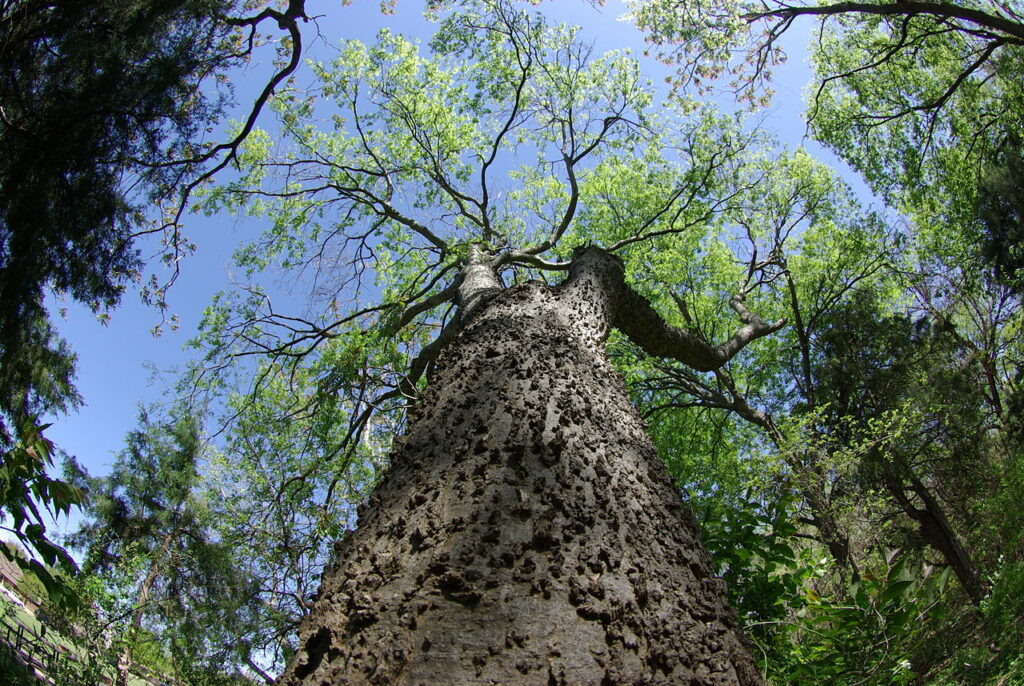
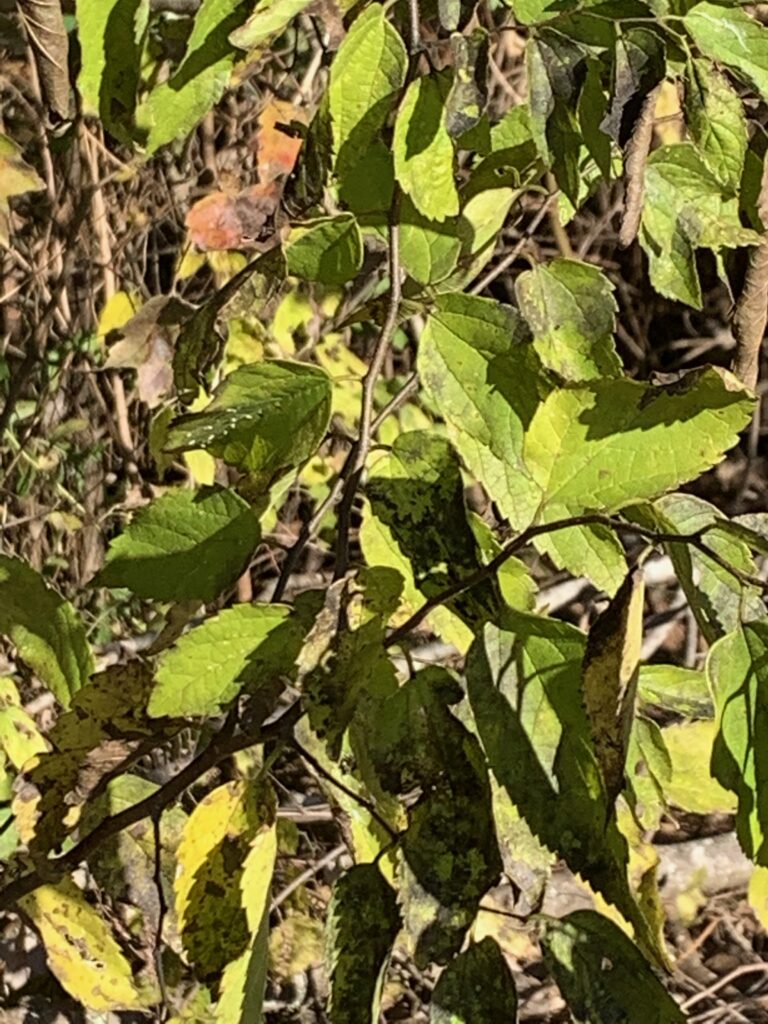
Common Name: Hackberry
Scientific name: Celtis laevigata
Type: Tree
Habitat: drained/moist soils
On both sides of the Greenway
Native
Perennial
Hackberry is a swamp tree’s swamp tree – rough and wicked-mean; covered with warty bark and cruel, wiry twigs and branches. The whole tree is so tough it could be used to whip the devil. It likes standing in dank, miserable soils loaded with clay and actually enjoys our stinking, hot, humid Gulf Coast climate, in fact, there’s a town with its name on the flat, bleak Louisiana coastal plain near Texas.
To be nice, the tree’s dense leaf canopy offers a deep, dark shade on a hot summer day. Its leaves host a small, gnat-sized insect called, no kidding, a Hackberry Nipple Gall-making Psyllid. These lay their eggs on the tree’s leaves and the leaf responds by growing thousands of freakish-looking green warts or galls. The little baby bug nests inside all summer, idly sucking on the tree’s sweet sap.
Pine
Common Name: Pine Tree
Scientific name: n/a
Type: Tree
Habitat: drained soils
On both sides of the Greenway
Native
Perennial
Pines dominate the coastal uplands in the US from New England to Texas. Historically, the Longleaf Pine (Pinus palustris) was the dominant tree from but after they were extensively logged, they’ve been replaced by quicker growing varieties like Slash,
Shortleaf, Spruce and Loblolly. A few pines have migrated from the uplands down into the swamps, usually by
colonizing high ground created by roadbeds, river levees and canal banks that meet their criteria.
Southern Live Oak
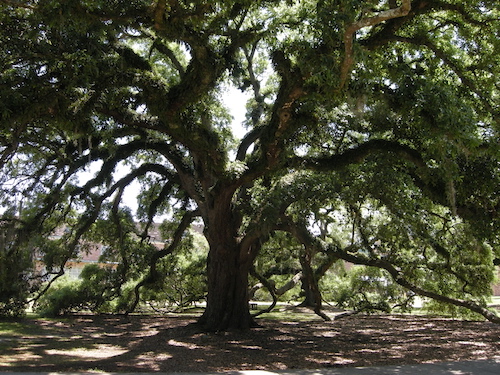
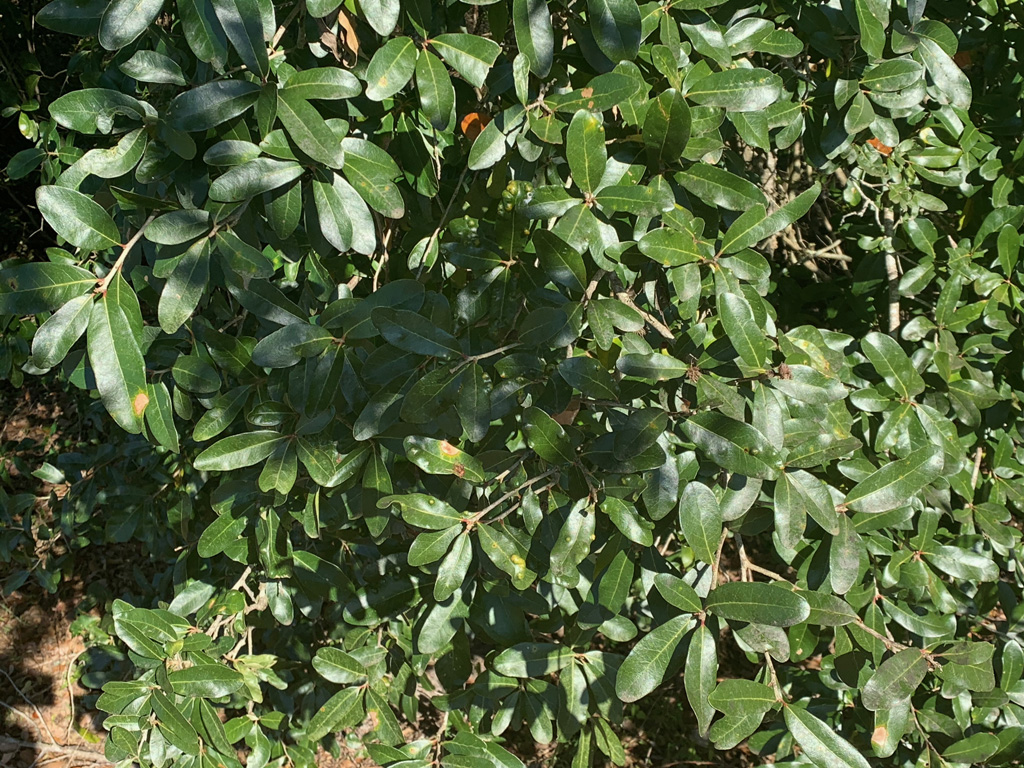
Common Name: Live Oak, Southern Live Oak
Scientific name: Quercus virginiana
Type: Tree
Habitat: drained soils
Found on both sides of the Greenway
Native
Perennial
The Southern Live Oak tree is a species of superlatives – it has the ability to grow massive trunks and branches that span large areas of ground, it can easily live for centuries, they are an evergreen, losing only a minor amount of their dark green leaves each year, the tree’s wood is HARD and will challenge any saw; fallen limbs can remain intact for decades.
Spanish moss (Tillandsia usneoides) is often found draped picturesquely from the tree’s branches and several other organism hitch a ride – vines and Resurrection ferns, for instance. Knot holes provide homes for birds, bees, squirrels and reptiles and the gnarly bark is a hunting ground for many smaller creatures.
The oaks growing on the margins of the Hammond Highway next to the Greenway and on the I-55 Canal spoil bank have yet to attain their potential size since of the amount of time since they were established or since the roadway was routinely maintained hasn’t been that long ago. Some of these trees can also be the stunted, minor subspecies of viginiana found in the tougher growing conditions of the coast.
Swamp Maple
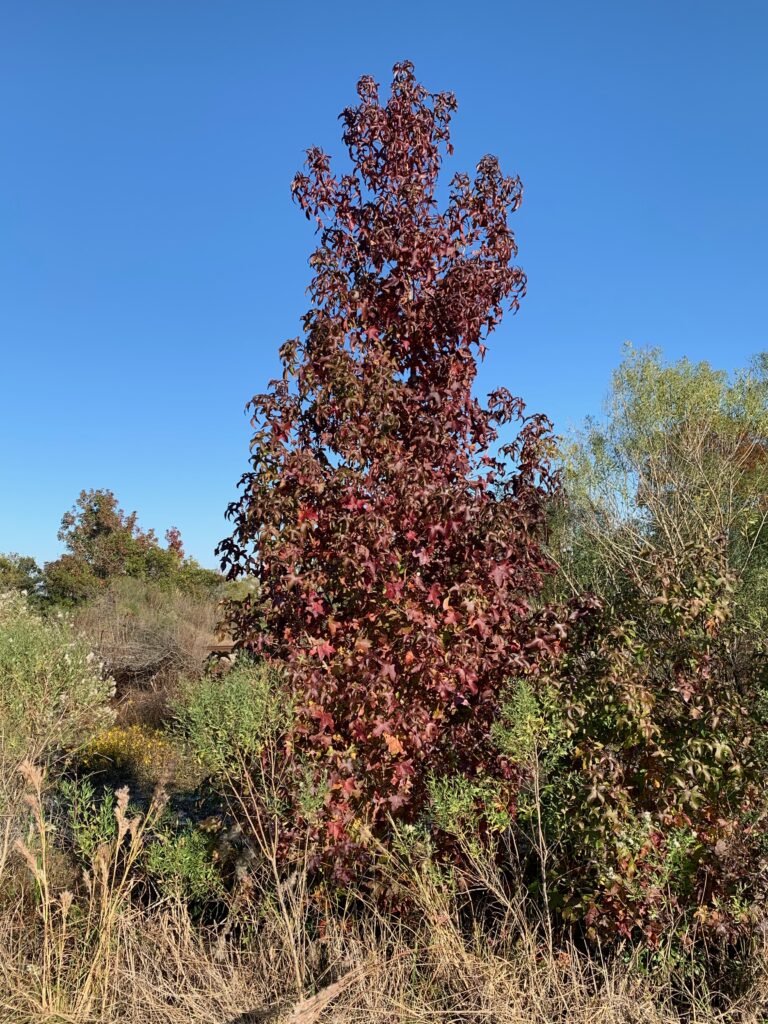
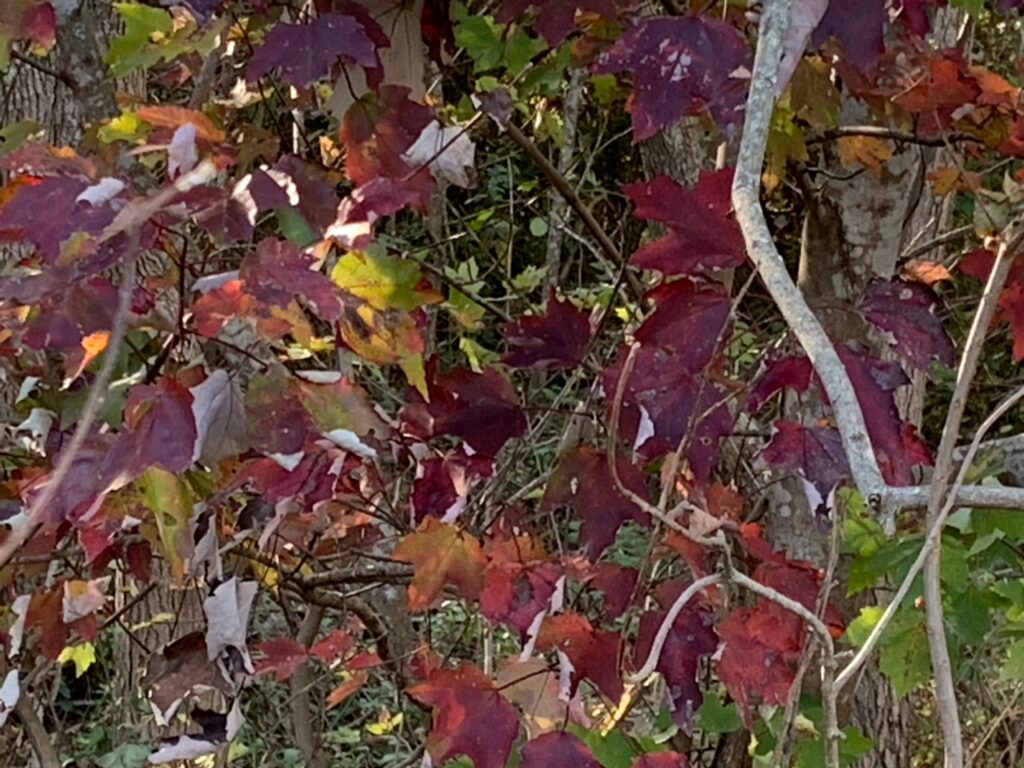
Common Name(s): Swamp Maple, Red Maple, Drummond Maple
Scientific name: Acer rubrum
Type: Tree
Habitat: Drained and poorly drained soils
On both sides of Greenway
Native
Annual
When the drab winter shifts to the vibrant spring, the first flash of color in the Manchac Swamp is from the red seeds of the Swamp Maple. Amazingly, the tree finishes its growing season in the same spectacular fashion as it began, by turning their fall leaves to the same crimson color as the seeds.
These unusual seeds spin when they fall, like a whirligig or a helicopter. This helps them remain aloft so the winds can take them further from the tree. Full-sized maples can produce a million seeds. If you’re lucky to be in the right place at the right time, a gust of wind can knock hundreds of these seeds loose from the branches and they fall in a beautiful, cascading shower of spinning seeds.
White-tailed deer love to eat the tree’s leaves but beware, these leaves can kill a horse. For humans, poking a hole in the bark in spring will yield a sap that can be boiled down to make maple syrup, though not as strong as the northeastern varieties of maple.
